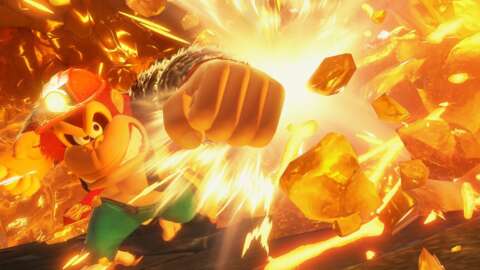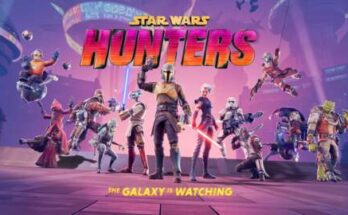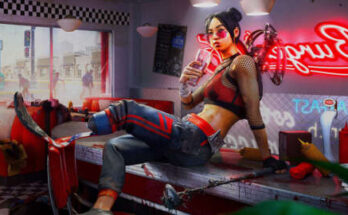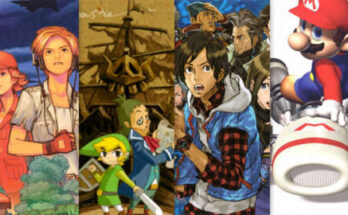
Donkey Kong Bananza is almost here, and Nintendo has posted a fascinating three-part interview with several of the key developers on the next big Switch 2 exclusive. It has been a long time since DK headlined his own game, and the team behind it is aiming for it to be the start of a new 3D era for the mighty ape. Discussing everything from DK’s visual overhaul to how the team leveraged the power of voxels, the roundtable discussion is full of fascinating tidbits that dig deep into this ambitious new game from Nintendo.
If you don’t have time to read through the thousands of words here, we’ve rounded up several insightful quotes and topics revealed by the team, including how Donkey Kong Bananza was originally envisioned as a Switch game, how the physics behind it allows you to skip parts of the story, and more.
In case you missed it, you can also check out our previous deep dive into Donkey Kong Bananza to see just how great an ape DK is in his new game.
Here’s a closer look at the lead developers

Nintendo has been cagey on who exactly is developing Donkey Kong Bananza, but the interview did finally reveal several of the people who have been working on this ambitious adventure.
Kenta Motokura
The director of Super Mario 3D World and Super Mario Odyssey, Motokura serves as a producer on Donkey Kong Bananza. “I crafted the game’s concept and set the direction for the overall structure and player controls,” Motokura added.
Kazuya Takahashi
Having previously worked “on a broad spectrum of games,” Takahashi is one of the directors on Donkey Kong Bananza and he says he gave direction on the game design and worked on the level design, cut scenes, and text creation.
Wataru Tanaka
Tanaka was involved in the development of several 3D Mario games, and as the programming director of Donkey Kong Bananza, he provided direction on the processing performance and utilization of system functions for Switch 2, as well as enemy behaviour.
Daisuke Watanabe
The art director of the Super Mario Galaxy games and a design lead on Super Mario 3D World, Watanabe oversaw Donkey Kong Bananza’s overall art direction.
Naoto Kubo
The sound director for Donkey Kong Bananza, Kubo composed the music for Super Mario Maker and led sound development on Super Mario Odyssey. Kubo added that he coordinated overall sound development on Bananza and also composed some of its music.
Nintendo wanted its 3D Mario team to create a 3D Donkey Kong game

Senior Nintendo executive Yoshiaki Koizumi wanted to expand the Donkey Kong franchise further, and he approached the team behind the 3D Mario games to bring the ape into the third dimension.
Veteran Nintendo developer Shigeru Miyamoto provided some guidance to the Bananza team

“We’d built up a lot of expertise in gameplay development for 3D action games through our work on 3D Mario games, including Super Mario Odyssey, but we needed to dive deeper into the fundamental question of ‘What is Donkey Kong?’ So, our first step was to seek out [Shigeru] Miyamoto-san and Koizumi-san,” Motokura said. Miyamoto–who created the character and had worked on several Donkey Kong games–said that he placed “great emphasis” on Donkey Kong’s moves back then. Koizumi said that Donkey Kong’s huge arms also set him apart from Mario, and these ideas inspired the Bananza team to focus on DK’s incredible physical strength.
Bananza will “fully convey the appeal” of Donkey Kong as a character

Motokura explained that Bananza will help create a new 3D branch of DK focused on the character’s power, and will thus feel very different from his 2D adventures. “This game will come to symbolize 3D Donkey Kong–and with the theme of bringing Donkey Kong’s strengths and new actions to the forefront–we thought the concept of ‘destruction’ would be a good fit,” Motokura said.
Donkey Kong’s redesign is more faithful than you think

While there has been some conversation regarding the changes to Donkey Kong’s design, the team thinks this new look embodies the core character of DK. “We also interviewed people who’d drawn illustrations of Donkey Kong from way back to preserve the image of Donkey Kong in the mind of his creator, Miyamoto-san,” Motokura explained.
Donkey Kong’s new look is also meant to make him look more interesting when playing as him

DK’s standard design made him look like a mass of brown fur from behind, the Bananza team said. That inspired the studio to make some creative adjustments to his outfit and improve his fur.
Development on the destruction tech behind Donkey Kong Bananza began long before the game was greenlit

The Super Mario Odyssey team had begun work on the “smashing” technology shortly after the game was released in 2017, running several experiments. “What kind of game do you get if everything in the environment is destructible?” Tanaka asked
They created a Goomba with arms as part of this experiment

“In Super Mario Odyssey, there’s a boss called Knucklotec who attacks Mario with giant hands,” Tanaka said. The programmer who created Knucklotec then attached his arms to a Goomba as part of an experiment, which then started smashing the terrain and using pieces of it as weapons. Tanaka said that those actions felt “surprisingly satisfying” and the team realized that destruction-based gameplay could be a compelling core mechanic.
With this idea applied to Donkey Kong, the team had found a concept and a gameplay hook for the character that clicked into place.
The Bananza team used voxels instead of pixels to fully realize the destruction tech

Takahashi confirmed that everything in the game is made out of voxels–which are the 3D equivalent of pixels–as the team went all in on this technology to create a world where you can destroy virtually everything in sight. This did lead to new challenges, as not everyone on the team was experienced in creating voxel-based games. The solution? Figuring out how to create voxels from scratch.
“Typically, in game development, 3D levels are created by first building polygon models and then applying textures to each of them,” Takahashi said. “But for this game, as soon as we had our voxel modeling tools, things became much more convenient. We could freely combine voxels and materials to build terrain and then test it out immediately in-game. This let us quickly experiment and iterate when building layers. That’s one of the great things about voxel technology, I think. Though it must have been an absolute nightmare for the programmers building the tools.”
Donkey Kong Bananza was originally going to be a Switch game

After running into several challenges during the production of Donkey Kong Bananza, the team began thinking about moving development to Switch 2 in 2021.
Switch 2 allowed for a smoother 60 FPS experience

One of the biggest changes in the shift to the newer Switch platform was that the team could place far more objects in the environment than before. This in turn meant that players had even more objects and terrain to destroy, amplifying the core appeal of Bananza. The other big change was the frame rate, as the team could now let DK run wild at 60 FPS. “That gave us the freedom to incorporate gameplay ideas we’d previously abandoned because they were too demanding,” Tanaka said. “When we got down to trying it, we discovered that not only could it handle the heavy processing requirements, but it also ran at 60 FPS. Things we’d given up on, like explosions flinging large objects or causing them to collapse, were now possible.”
The terrain is full of realistic physical properties

There’s more to the ground than you realize, as destroying it will reveal small details. Rip up some grass and you’ll see the soil below, punch a rock and cracks will form, or carve up some land near a body of water and you’ll see it change when its affected by moisture.
The game looks and sounds good

“We also poured a lot of effort into the sound effects to make the sense of destruction feel satisfying and responsive,” Kubo said. This process wasn’t just about using loud or dramatic sounds, as the sound team wanted sounds that were pleasant to hear and wouldn’t become quickly repetitive or tiring.
Old-school sound design

To make those sounds authentic, the team used the Foley method of capturing specific audio effects by hand. “We also added subtle randomness through programming and fine-tuned the sounds to make sure they weren’t too loud or high-pitched,” Kubo explained. “Meanwhile, for special objects that show up later in the game, we emphasized fun and flashy sounds. We hope players will find them satisfying.”
There’s even a dedicated sound for hitting a watermelon

“When players hit it, we wanted it to sound delicious,” Kubo said.
You can skip parts of the story thanks to the power of destruction

The Bananza team says that there’s a lot of “leeway” in terms of progression, and players will be able to skip parts of the game and not suffer any consequences for doing so. “When the game progresses in a way we hadn’t intended, we call it a ‘sequence break’ in development terminology. Typically–in game development–restrictions are put in place to prevent this from happening, but since this game is all about destruction, we wanted people to play freely.”
Each world is meant to evoke a sense of surprise when its reached

Watanabe said that the Bananza team worked to make each layer of Ingot Isle feel distinct, resulting in a lot of thought being applied to each area’s color scheme, unique features, and more.
Pauline was initially challenging to add to the game

The Bananza team struggled to organically integrate Pauline into the game, but once the transformation gameplay mechanic for DK began to take shape, this opened the door for Pauline to accompany the ape on his adventure. Kubo wrote a song for each animal Bananza transformation that DK can access, tying Pauline’s singing to them.
DK and Pauline will bond during their adventure

“In the story, Donkey Kong is motivated by his love of bananas, but we wanted to have something else that players could relate to,” Motokurasaid. “By featuring Pauline, we thought we could create an experience where players are part of Pauline’s growth and the growth of Donkey Kong, adventuring alongside her. The best part was that it gave us the chance to incorporate various gameplay features using the power of song, such as breaking seals or showing the route to a destination.”



